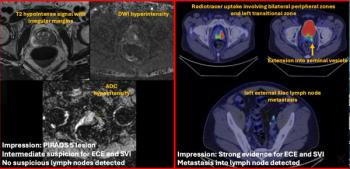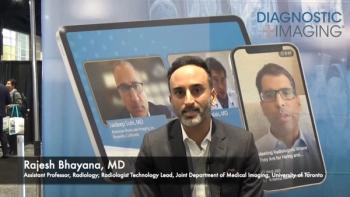
Quality healthcare requires better integration of PACS with patient record
Clinicians have become frustrated wrangling with various hospital information systems and a separate PACS. Now they are demanding greater integration between digital diagnostic images and the electronic patient record.
Clinicians have become frustrated wrangling with various hospital information systems and a separate PACS. Now they are demanding greater integration between digital diagnostic images and the electronic patient record.
Currently, diagnostic images are created digitally and stored in the radiology department PACS. Subsequent reports are stored in the electronic patient record (EPR) or other information systems, such as the RIS or HIS.
"With the increasing importance of medical imaging in diagnosis and therapy, integrating imaging information into the EPR is mandatory," said Heiko Münch, a researcher at the German Cancer Research Center in Heidelberg.
Clinicians want access to data in both systems in an integrated, consistent manner as part of their regular working environment, according to Münch. In the current clinical environment, however, PACS and radiology are on one side and the EPR is on the other. Münch described a solution to the PACS/EPR divide in a study published in the June issue of Academic Radiology (2004;11(6):607-608).
For activation, Münch's application requires only a Web browser and Java Runtime Environment, both standard on most PCs. No additional software is necessary. The system is also platform-independent, so Linux, Windows, or Mac can use it with no compatibility issues.
The server backend can be connected to any PACS, according to Münch.
"Using a standard DICOM interface, the system can be used as extension for existing PACS and HIS," he said.
When a clinician accesses the system, a Java applet shows the requested data, and an active user interface embedded in HTML indicates whether there are associated images or other information. Users can manipulate images, take measurements, or establish teleconferencing connection to other users.
"The system provides full image quality through the network to peripheral clinicians or referring providers," Münch said.
A teleconferencing feature connects clinicians located anywhere - inside or outside of the hospital - and they can discuss images in real-time.
"Teleconferencing between the Web application and the radiology workstation is possible, enhancing interdisciplinary cooperation," Münch said.
The system is designed for broadband environments but can work over narrow bandwidth lines if necessary. Images can be compressed lossless or lossy by factors of 2 to 100 using the latest JPEG2000 standard. The user can change the compression rate or switch it off for individual studies and load relevant images in original DICOM quality.
Newsletter
Stay at the forefront of radiology with the Diagnostic Imaging newsletter, delivering the latest news, clinical insights, and imaging advancements for today’s radiologists.




























